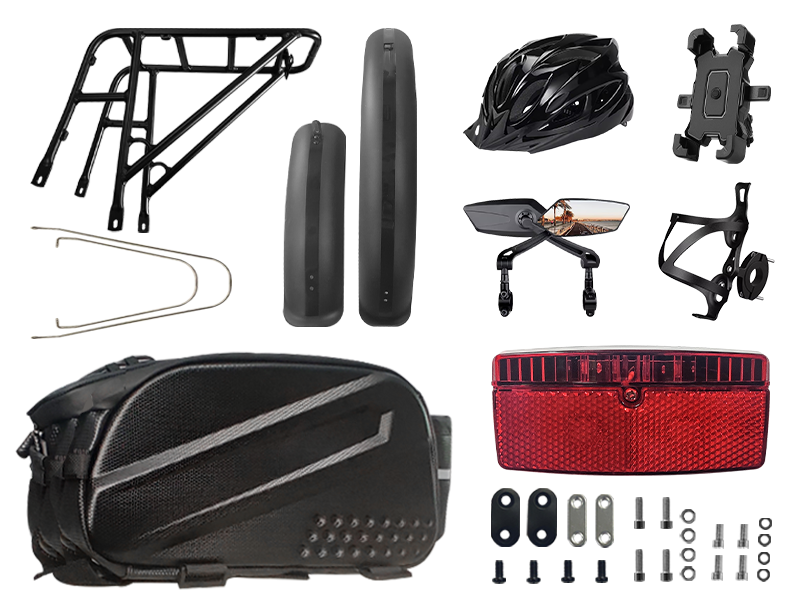E-Bike vs. E-Scooter: Find the Perfect Ride for Your Commute
NOV 07, 2024
When it comes to urban commuting or leisurely weekend rides, both e-bikes and e-scooters offer convenient, eco-friendly alternatives to traditional transportation. But how do you choose the right option for your needs? Whether you’re looking for a versatile commuting tool or something to cruise around the city, understanding the key differences between e-bikes and e-scooters can help you make the right decision.
1. Speed & Range: Getting There Faster
- E-Bike: With speeds of 20-28 mph (depending on local regulations), e-bikes offer the flexibility of both electric assist and pedal power. Ideal for longer trips, an e-bike typically provides a range of 20-50 miles on a single charge, depending on the model, terrain, and rider input.
- E-Scooter: E-scooters usually have a top speed of 15-20 mph, which makes them perfect for quick, urban commutes. Their range typically falls between 10-30 miles, depending on factors like battery capacity, rider weight, and the type of roads you’re traveling.
2. Comfort & Ride Quality: Smooth or Bumpy?
- E-Bike: Thanks to their larger tires and padded seats, e-bikes offer a more comfortable ride, especially on longer distances and uneven surfaces. Some models also feature suspension systems for added comfort, making them ideal for varied terrain.
- E-Scooter: While e-scooters are more compact and agile, they typically have smaller wheels and no suspension, making them less comfortable over bumpy roads. They’re best suited for short, smooth urban rides.
3. Portability: Easy to Store and Transport
- E-Bike: E-bikes can be heavy, often weighing 40-70 pounds, which can make them cumbersome to carry or store. Some folding models exist, but they’re still bulkier than scooters.
- E-Scooter: E-scooters are lightweight (typically between 20-40 pounds) and easy to fold, making them highly portable. They can fit into the trunk of a car or be carried up stairs with little effort.
4. Cost: What’s the Price of Freedom?
- E-Bike: Generally, e-bikes are more expensive, with prices ranging from $1,000 to $5,000 or more for premium models. However, they offer better long-term value due to their versatility and ability to tackle a variety of terrains.
- E-Scooter: E-scooters are more affordable, typically ranging from $300 to $1,500, depending on the model and features. They’re a great entry point for those looking for an electric vehicle but don’t want to break the bank.
5. Maintenance: Keeping Things Running Smoothly
- E-Bike: E-bikes require regular maintenance of the motor, battery, brakes, and gears, much like a traditional bicycle. However, their more complex components may require more frequent servicing than a scooter.
- E-Scooter: E-scooters generally have fewer components that need maintenance, with the main focus being on the battery, tires, and brakes. They’re easier to maintain but may need more frequent tire replacements due to the small wheel size.
6. Safety: Which Is Safer for Your Ride?
- E-Bike: Due to their higher speeds and the ability to go off-road, e-bikes may be safer for longer trips if equipped with proper safety features like lights, reflectors, and a helmet. The added stability of two wheels and the ability to brake effectively also contribute to safer riding.
- E-Scooter: E-scooters tend to be more precarious because of their smaller wheels and lack of balance. They are best suited for shorter trips, and wearing a helmet is highly recommended. Many scooters now come with features like lights, but they are generally less safe on rougher terrain.
7. Ideal Use Cases: What’s Your Purpose?
- E-Bike: If you plan to use it for commuting longer distances, tackling various terrains, or carrying cargo, an e-bike is likely the better option. They are also great for those looking to exercise while commuting, as you can pedal as much or as little as you like.
- E-Scooter: E-scooters are perfect for short urban commutes, running errands around town, or as an accessory to public transportation. They’re also great for riders who need something portable and easy to store.
Final Thoughts: E-Bike or E-Scooter?
Choosing between an e-bike and an e-scooter ultimately comes down to your needs, budget, and lifestyle. If you’re after long-range commutes, more comfort, and versatility, an e-bike is the way to go. However, if you’re looking for an affordable, compact, and quick solution for short trips around town, an e-scooter might be the better fit.
Whichever you choose, both e-bikes and e-scooters are fun, eco-friendly ways to explore your city while reducing your carbon footprint.












